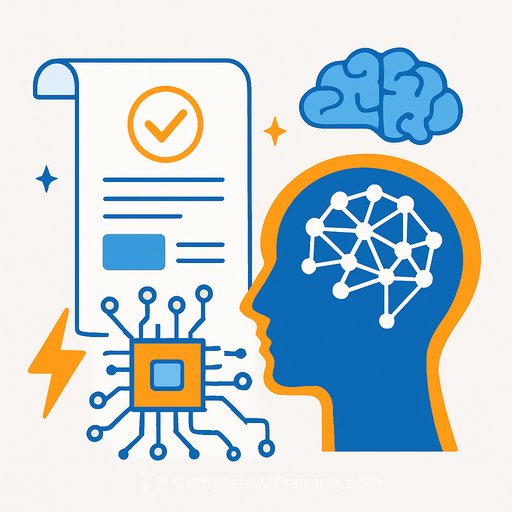AI Journey 2025: AI as Strategic Infrastructure and Why Collaboration Now Matters
At the 2025 AI Journey Conference on November 21, technology leaders, researchers, and industry operators aligned on a clear message: AI has moved from experimentation to national strategy. The conversation centered on autonomous decision-making systems, infrastructure at scale, ethical guardrails, and cross-border cooperation.
The main plenary featured Russia's President Vladimir Putin, moderated by Herman Gref, CEO and Chairman of the Sberbank Executive Council. Leaders and experts from multiple countries covered the technical and policy work needed to deploy AI safely and at scale.
Key messages engineers and researchers should note
- AI is now strategic infrastructure: President Putin highlighted AI's rapid progress in autonomous decision-making and called for stronger foundations: data centers, compute, and advanced electronic components. He pushed for clear regulations and ethics to protect national interests while enabling innovation.
- Cooperation beats isolation: He emphasized bilateral and multilateral partnerships to accelerate safe AI development and acknowledged the role of Sber and the AI Alliance in uniting government, business, and academia.
- Human transition is the hardest problem: Herman Gref noted AI already touches health, science, education, the economy, and industry-and the real challenge is helping people adapt without shocks. He added that Russia is among seven countries with a full advanced AI stack, citing the value of consistent government attention. Lessons apply to any country building capability, including Indonesia.
- From automation to autonomy: Evgeny Burnaev (Skoltech AI Center) projected a shift to interacting AI systems managing manufacturing, logistics, energy, and public services. This invites a new role: "program design" specialists who ensure systems are safe, verifiable, and reliable.
- Generative AI compresses research cycles: Dr. Ajith Abraham (Sai University) shared findings from an International AI Alliance study: tasks that took months or years can be reduced to days or weeks.
- Everyday multi-agent assistants: Author Chen Qiufan described near-term use cases like AI doctors on phones for early diagnostics and multi-agent tutors, coaches, and financial aides-tools that could meaningfully alter daily life.
International AI Alliance expands
The Alliance, established during last year's conference, has grown from 17 associations across 14 countries to include 11 additional organizations from Brazil, Chile, Congo, Egypt, India, Kenya, Oman, South Africa, Tanzania, Turkey, and Vietnam. The expansion signals broad agreement that cross-border collaboration is required to build safe, ethical, and widely useful AI.
What this means for IT, engineering, and research teams
- Secure compute and data pipelines: Plan for GPU/accelerator capacity (hybrid or on-prem), stable networking, storage tiers, and cost controls. Treat data quality, lineage, consent, and retention as first-class concerns. Consider privacy-preserving techniques and synthetic data where appropriate.
- Adopt a portfolio of models: Mix open, proprietary, and domain-specific models. Combine RAG, fine-tuning, and distillation. Standardize evaluation: correctness, latency, cost, safety, and drift. Keep versions, prompts, and datasets under tight change control.
- Engineer for autonomy with guardrails: Move from scripted automation to closed-loop agents in narrow, well-scoped domains. Start with human-in-the-loop review, formalize handoff criteria, and log everything for auditability.
- Build assurance as a product feature: Red-team models, stress-test prompts, and instrument for observability. Use safety cases and incident playbooks. Reference recognized frameworks like the NIST AI Risk Management Framework and the OECD AI Principles.
- Develop "program design" skills: Cross-train ML engineers, data engineers, and SREs in verification methods, constrained decoding, policy enforcement, and adversarial testing. This matches the need identified by Burnaev for specialists who ensure safe and verifiable autonomous systems.
- Plan for workforce transition: Establish continuous training paths for product, ops, and research teams. Align incentives with measurable AI outcomes (quality, reliability, throughput), not vanity metrics.
Why policy and infrastructure move together
The plenary made it clear: the countries that win will pair national-scale infrastructure with clear rules. Compute without governance invites risk. Governance without compute slows down applied research and deployment. The balance is the point.
For teams, that translates into a dual track-scale reliable platforms while formalizing evaluation, safety, and compliance. Do both, or progress stalls.
Bottom line
AI is now a national capability, not a side project. The path forward is practical: invest in infrastructure, insist on measurable safety, adopt multi-model strategies, and work with partners beyond your borders. That's how you get durable results-without the chaos.
Want structured upskilling for your team? See curated AI courses by role and skill at Complete AI Training.
Your membership also unlocks:










